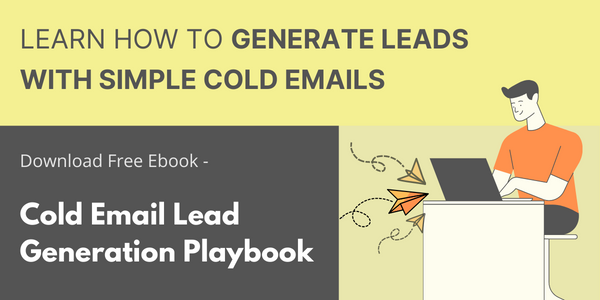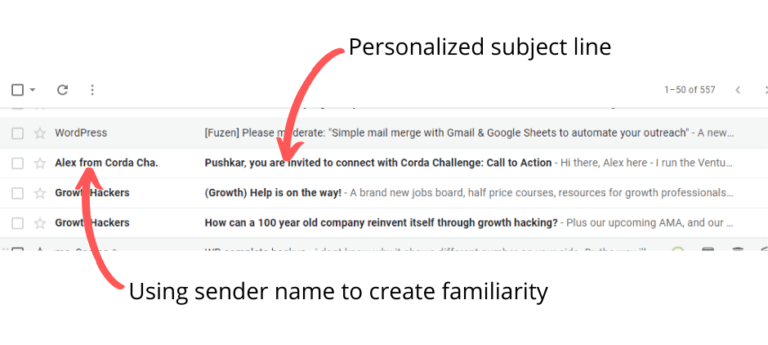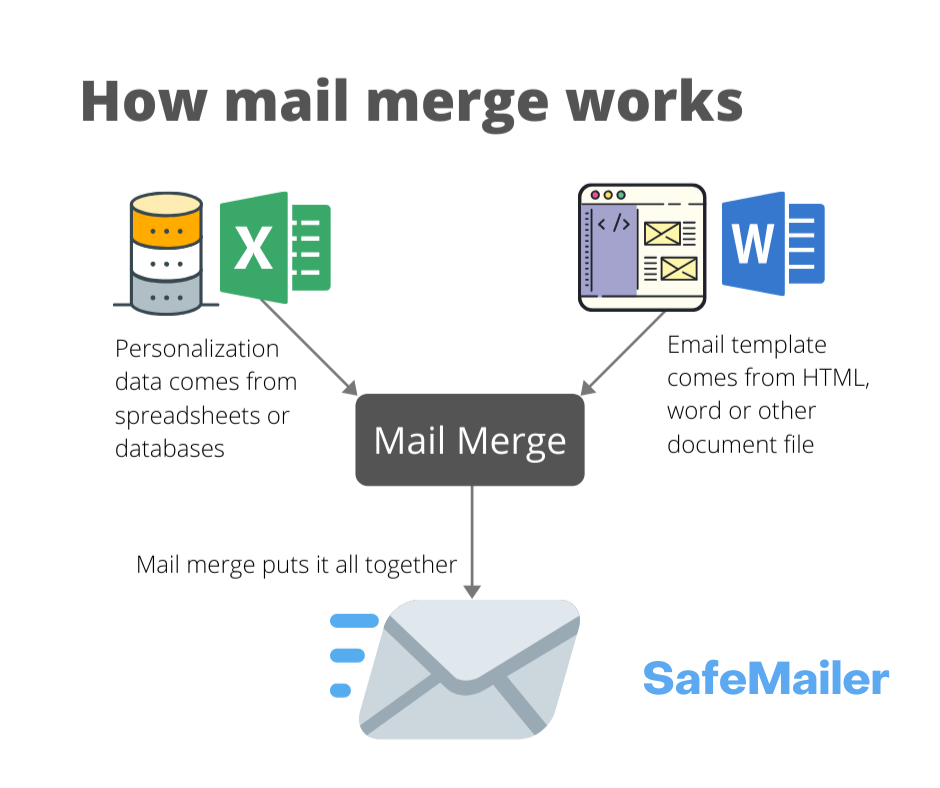Email is still a strong and valuable channel for marketing and sales. This is especially true for B2B marketing and sales. But over the years, it has become increasingly harder to get someone’s attention by a simple cold email. This is mainly due to increased volume of such emails that have flooded the mailboxes of most people.
In such a competitive situation, how do you write a good cold email to get attention of a prospective customer?
Type of content
1. Cold email automation to boost email deliverability
2. Sender Name (your name used in the email account)
3. Compelling subject line
4. Personalize subject and email text
5. Keep it short
6. Clear unambiguous call to action
7. Add some value
8. Conclusion
1. Cold email automation to boost email deliverability
In order for someone to open and take notice of your email, it should first be able to reach their inbox. Most cold emails often get trapped in spam or junk folders.
If you use bulk email marketing tools like mailchimp etc, it becomes very difficult to avoid spam filters. This is because bulk emails coming from an email marketing server can be seen by SPAM filters, and they tend to get filtered into spam or junk folders. If 80% of your cold emails don’t even reach inbox, the overall opening rate and success rate is going to be low.
So the first step towards writing successful cold emails, is to improve the deliverability of your email campaigns. You can use a cold email automation tool for this purpose. Instead of sending hundreds or thousands of emails at once, cold email automation staggers your email campaign over a period of time, to mimic human like email sending behavior. This way most of your emails should reach inbox. You can regularly test the deliverability of your emails to make sure your cold email automation is succeeding.

2. Sender Name (your name used in the email account)
Cold email automation will get your emails to the inbox. The next challenge is to get the recipients to click on it and open it.
Before someone can open your email, they will only notice two things – ‘sender name’ and ‘subject line’. These two things should convince them that it is indeed worth their time to click and open this email.
Very first thing they will notice is your sender name. As you have written a cold email, the recipient does not know you. You are a complete stranger. So you need to give him a good reason to open your email.

Here are a few pointers –
- Avoid using generic titles like ‘Sales Team’, ‘Support Team’ etc. Putting a human name to your identity makes it more likely that someone will interact with you.
- Give them a clue about why you are sending this email. They probably submitted their email address to your company website – to sign up for a newsletter or to download an ebook. So even if they don’t know your name, they probably still remember the company name. Use that thread to establish familiarity. For example – ‘Jack from SafeMailer’ rings a bell better than just saying – ‘Jack Wilson’.
- You can even add, your designation or role at the company to establish a stronger connection. For example, if a user signed up for free trial, your cold email should say – ‘Jack – SafeMailer Onboarding Team’. That immediately explains why this person is receiving this email. If they are interested in using your platform, they will definitely open and read it.
3. Compelling subject line
If your ‘sender name’ does establish a connect with the readers, the next thing they will notice is the ‘subject line’. It should compel the reader to click on it and open your email.
Here’s how to write a good subject line for your cold email –
- Use personalization. Mentioning the name or company name of your prospects in your subject line, drastically increases the chances of them opening the email. Most mail merge tools enable easy personalization of the email text and some of them also allow the subject lines to be personalized.
- Invoke curiosity. Your subject line should ask a question that your recipients will care about. Then your email text should answer that question. For example – “Do you know the best kept secret of cold email marketing?”
- Create urgency. Unknown to us, ‘Fear Of Missing Out (FOMO)‘ drives a lot of our decision making. Marketers frequently use it to create urgency for buyers. For example – “Without {{your product}}, businesses waste a bug chunk of their budget”
- Establish connect. If the prospect is not familiar with your company name, the ‘sender name’ would not help in creating a connect. You may then want to use the subject line to establish a connection in their mind. For example – “Hi {{Name}}, we connected on LinkedIn earlier.”
4. Personalize subject and email text
Modifying your sender name and subject lines will help your email get opened. Then next challenge is to establish a connection with the reader, grab their interest and ask them to take an action. Email personalization helps you in establishing that connection.

Before sending the cold email, there is no relationship between you and the prospect. But if you mention their name, company name, designation, interests etc, in your email, it will add an air of familiarity between the two of you.
You can use a this mail merge tool connected to Google Sheets and Docs to import user data from Google sheets and insert it at the appropriate places in HTML text editor to create highly personalized emails.

5. Keep it short
Your cold email is the first time for your prospect to ever hear from you. So, unless what you have to say is of utmost importance to the reader (which is very rare), he will not spend more than a few seconds to screen through your email.
If you write a long email, very few people will even bother reading it. After opening the email (thanks to a catchy subject line), they will ignore it and move on. All the hard work that got you so far would be wasted.
A general rule of thumb is not to write more than 4-6 lines in your cold email. Only then someone will actually try to even read what you have to say.
Refer to these cold email templates and use them for inspiration as you write your own super engaging email.
6. Clear unambiguous call to action
If you only have the limited space of 4-6 lines to write your message. You must be very clear and direct about what you have to say.
If the recipient has any history with your company like ‘free trial sign up’, ‘webinar registration’ etc, clearly but briefly mention it.
For example – “Thanks for signing up on our platform.”
Then quickly get to your value proposition. Explain your proposal and then make a clear call to action (CTA).
Some examples of CTA –
- Schedule an online demo
- Register for webinar
- Set up a time for consulting call
You can use tools like calendly to make it easier for people to follow through your CTA.
7. Add some value
Your prospects will to respond to your CTA, but only when they find a tangible value proposition. So make sure to explicitly make your value proposition clear in your email.
For example –
- Improve their productivity (via the use of your software)
- Cost savings (via discounts, limited time offers)
- Knowledge gain (via webinars, ebook downloads)
- Improved skills (via online training)
How clearly you write these value propositions in your cold email is going to highly impact the success rate for these emails.
Conclusion
These tips and tactics will help you write a more engaging cold email. But to be of any value, your cold emails will first need to reach your audience. You can ensure that they do reach INBOX, by following certain best practices for cold email sending.
When used correctly, cold emailing will be a very effective yet inexpensive channel for lead generation.

Leave a Reply